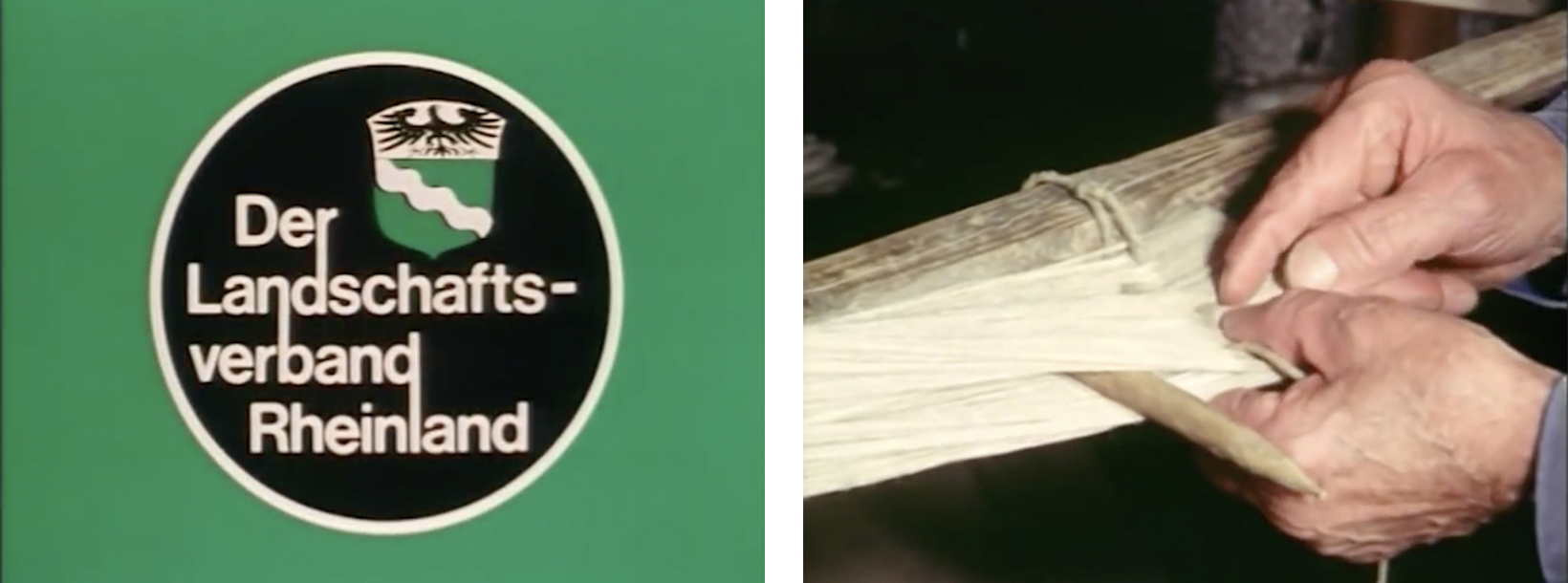(February 2022)

In the 1970s the German organisation Landschaftsverband Rheinland (LVR) began an ambitious project to record vanishing rural crafts, customs and work practices – including bell casting, mousetrap making, clay pipe making, butchery and bakery, as well as the cultivation and processing of flax.
As part of the project, former weavers in the town of Dickenschied were asked to re-enact the traditional linen-weaving that had been common in the area until the mid-twentieth century. A team of filmmakers recorded the process in a series of 16mm films that have since been digitised and made available on YouTube.
Titled Bauerliche Lienenweberie, the films are remarkable in their systematic and highly detailed presentation of the entire weaving process, including the making of a warp, the construction of a loom, and the bleaching of the woven cloth.
Since early 2022 I have been working on English translations of the German commentary to the films. (These translations are now available as blog posts. The first is here.)
Here’s a link to the LVR’s webpage Filmdokumentation Bäuerliche Leinenweberei.
The archive includes 5 original films, with a total duration of 2.5 hours, as well as over 400 photographs recording the process.
Part 1 Schären der Kette shows the winding of a warp on a warping mill, twenty ends at a time, with the aid of a paddle to form the porrey cross. (My translation of the narrated commentary for this film can be found here.)
Part 2 Aufschlagen des Webstuhls shows the construction of a loom from its components. (My translation of the narrated commentary for this filmcan be found here.)
Part 3 Aufbäumen, Anknüpfen und Schlichten der Webkette shows how the warp is beamed, tied and dressed on the loom in preparation for weaving. (My translation of the narrated commentary for this film can be found here.)
Part 4 Die Herstellung von Leinwand records the weaving itself. (My translation of the narrated commentary for this film can be found here.)
Part 5 Die Garn- und Tuchbleiche shows how the yarn and cloth are bleached.
In 2020 I made a short film called Die Leinenweberie / The Linen Weavers by re-editing some of this digitised archive film, as a way of thinking about my own practice and exploring the performative dimension of weaving. Wilhelm Mosel and Otto Klos, the weavers in the film, are re-enacting a process they remember from the past. Hand weaving is always a re-enactment, the repetition of a time consuming and methodical process which has been repeated by generations of weavers across the world. My remixed film focuses on the intimate contact between the weavers and their equipment, showing only their hands and feet and replacing the original narration with a constructed soundtrack.
The LVR also produced a series of films called Filmdokumentation Bäuerliche Flachskultur recording a re-enactment of the processes involved in growing, harvesting, processing and spinning flax. Together, these unique films show the entire process of linen making, from soil to cloth.
I am currently working on a translation from German to English of the narration to the Bauerliche Lienenweberie films. The first part forms my next post.